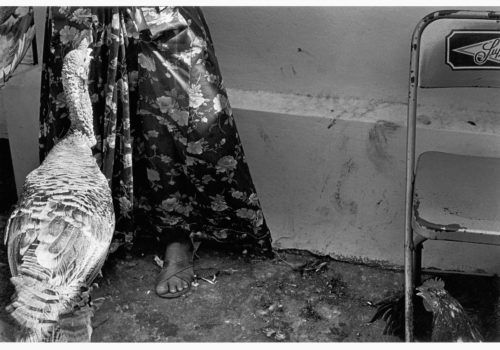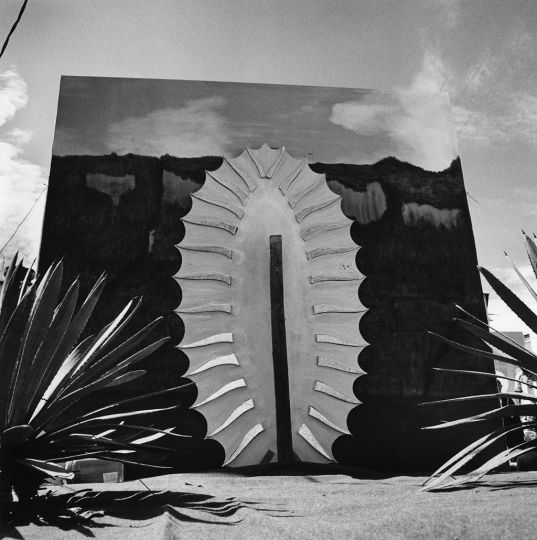After last year’s Argentine theme, this year the Rencontres de la Photographie d’Arles will feature Mexico as well as an ambitious exploration of the image and the internet. This focus on a country whose rich photographic history began after the revolution in 1910 with such names as Manuel Alvarez Bravo (see Internazionale n° 779) in addition to such foreigners as Edward Weston, Tina Modotti, Paul Strand, Henri Cartier-Bresson or Hugo Brehme, was almost canceled. It was part of the annual cultural fair “The Year of Mexico in France” that was canceled following President Sarkozy’s irresponsible and vexing comments taking up the cause of Florence Cassez, condemned for 60 years imprisonment for kidnapping. But the combined efforts of the Mexican Televisa Foundation and the French Foreign Ministry of Cultural Affairs allowed the essence of this festival – if no others – to survive.
In the panorama that leads from the Revolution to today, one figure stands out, a part of photographic history, winner of the prestigious W. Eugene Smith and Hasselblad Foundation prizes, and certainly most characteristic above all of what might be considered “Mexican photography”. Her name is Graciela Iturbide.
This former film student turned to photography in 1970 when she became the assistant, and friend until the end, of Manuel Alvarez Bravo, an emblematic Mexican photographer and one of the inventors, alongside Kertèsz, Cartier-Bresson, Brassaï and Bill Brandt, of modern photography. It is at his side that she learned, beyond any technical approaches, to use a rare sense of freedom and vision similar to the “magic realism” that became the basis of contemporary Latin American literature. She would very naturally approach native groups, among others the Huicholes musicians whose violins cry to the bottom of the soul, and the inhabitants of the Sonora desert. One picture could tell the story of these unreal moments: seen from behind, a woman dressed in a long black veil walking toward the desert carrying a radio cassette in her right hand. But the photographer who took procession scenes or Carnaval with a tender eye, sometimes amused, who took pictures of things we would otherwise doubt, who renewed a photography that could have otherwise remained anecdotal or ethnographic, didn’t forget the city. A worrisome man walking with a mirror in the street shakes up his surroundings, a child playing with a gun, a woman walking with her child, dead or alive, protecting him with her veil, the wind blowing through the fabric.
Gabriela Iturbide’s great work, however, of these Mexican years, was built in a unique place, on the wind stricken grounds of the Zapotèque de l’isthme de Tehuantepec, the narrowest stretch of Mexico. Juchitan is a matriarchal city. The men fish and work the land while the women keep everything running. Family life, celebrations, fights and demonstrations. Strong women who bonded with Iturbide who admirably captured their intense conversations, their walks, and the swinging dances that kept their colorful skirts spinning. That is where she took her now infamous portrait, Notre Dame des Iguanes, of a woman wearing the animals on her head she was preparing to sell at the market. Surrealism was omnipresent (Breton had declared Mexico the country where surrealism was a daily reality), intensified by the surprises of reality. In this singular world, Graciela had a particular fondness for the transvestites who, adored by the women, lived peacefully in this matriarchal society devoid of male chauvinism. Her series of portraits of “Magnolia” are devoid of voyeurism and full of a rare tenderness for a subject most often treated with vulgarity. Even the animals, including the chickens, were pretexts for tender photos, the poetry of daily magic, even when, in a tight crop, the feathers would blend with skirt fabrics.
This poetic approach to the world can be seen in uncountable pictures of birds taken in her country, and during her numerous travels to India or Italy, that she gathered together in a book hovering between beauty and worry. When the birds became too cumbersome and invasive, her crop was worrisome, but always light, untouchable.
In one of the most recent series, she continues to treat with scathing sensitivity, in a succession of medium format pictures, the tension between reality and the inner world. Closer to home, in the South of Mexico, the Coyoacan region was also home to Leon Trotsky where he was assassinated, and Frida Kahlo’s Blue House. After the artist’s death, Diego Rivera hid, behind a door in the bathroom that he walled up, the personal objects and archives of the woman who was his muse and with whom he lived a tumultuous passion. It wasn’t until 2004 that over 24,000 documents were discovered including manuscripts, letters, prints by Man Ray or Tina Modotti as well as posters representing Stalin or revolutionary literature. They also included clothing and her infamous corsets, indispensable objects that allowed Frida to stand straight, resembling torture instruments, evoking the pain she endured throughout her life following an accident. Graciela took pictures of them in natural light, turning them into a very moving portrait, simple, and tortuous. Visible too are, among other things, the photographer’s deformed feet in the tub, the self portrait of a woman who forever suffered the pain of losing her 6 year old daughter in 1970.
A self-portrait that reveals her generosity, her modesty, and the profound poetry of her unique work.
Christian Caujolle
Rencontres d’Arles 2011
July 4th – September 18th
Graciela Iturbide
Espace Van Gogh
10am – 7pm

















